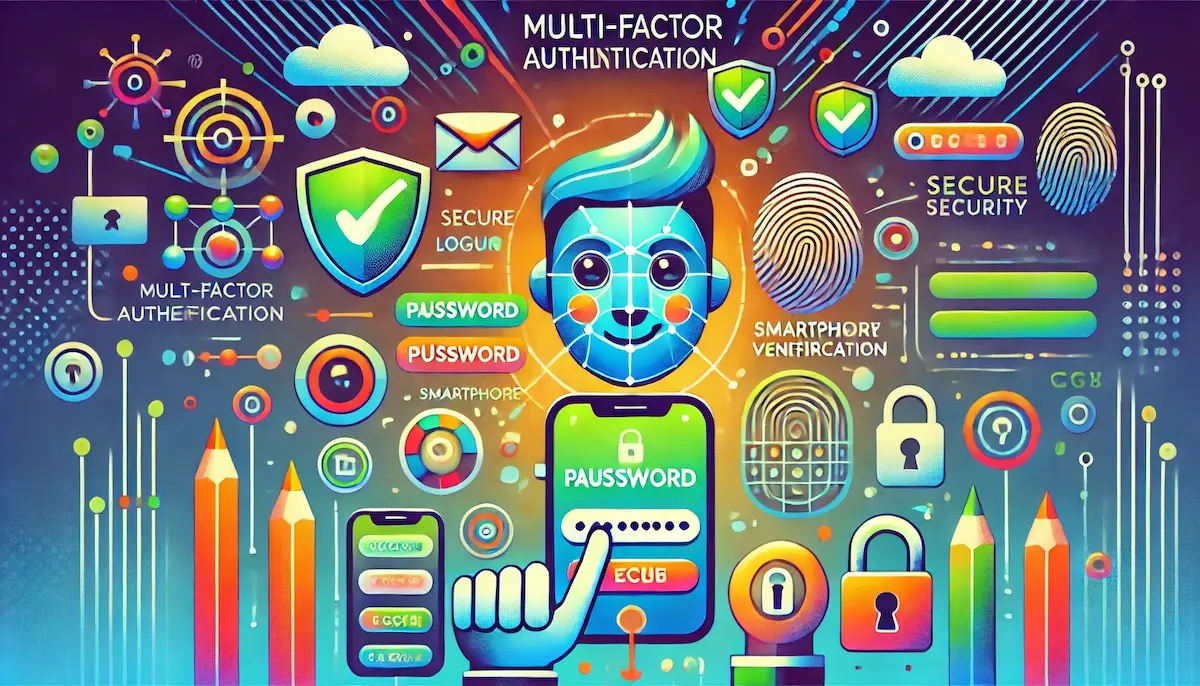Multi-Factor Authentication (MFA) is a security mechanism that requires users to provide two or more verification factors to gain access to a resource such as an application, online account, or VPN. This method enhances security by combining something the user knows (password), something the user has (security token), and something the user is (biometric verification).
What is Multi-Factor Authentication?
Multi-Factor Authentication (MFA) is a security process that ensures a user’s identity by requiring multiple credentials. It reduces the risk of unauthorized access by adding layers of security beyond just a password. Even if one factor is compromised, the additional layers help prevent an attacker from gaining access.
Types of Authentication Factors
MFA typically uses a combination of the following authentication factors:
Knowledge Factors
Knowledge factors are something the user knows. Common examples include:
- Passwords: A secret combination of characters.
- PINs: Personal Identification Numbers used in conjunction with other forms of authentication.
- Security Questions: Answers to personal questions only the user is likely to know.
Possession Factors
Possession factors are something the user has. These are physical devices or objects in the user’s possession, such as:
- Smartphones: Used to receive authentication codes via SMS, email, or dedicated apps like Google Authenticator.
- Security Tokens: Hardware devices that generate time-sensitive codes.
- Smart Cards: Physical cards with embedded integrated circuits used for authentication.
Inherence Factors
Inherence factors are something the user is. These are biometric characteristics unique to the individual, such as:
- Fingerprints: Scanned using fingerprint readers.
- Facial Recognition: Identified through cameras and software.
- Iris or Retina Scans: Used to analyze unique patterns in the eye.
- Voice Recognition: Identified through unique voice patterns.
How Multi-Factor Authentication Works
Step-by-Step Process
- User Login: The user enters their username and password (knowledge factor).
- Secondary Verification: The system prompts for a second factor, such as a code sent to their smartphone (possession factor) or a fingerprint scan (inherence factor).
- Access Granted: If the second factor is verified, access is granted. If not, the access is denied.
Example Scenario
A user wants to access their online banking account:
- Step 1: They enter their username and password.
- Step 2: They receive a one-time code on their smartphone and enter it on the login page.
- Step 3: They may also be prompted to scan their fingerprint.
- Step 4: Upon successful verification of all factors, they gain access to their account.
Benefits of Multi-Factor Authentication
Enhanced Security
MFA significantly reduces the risk of unauthorized access. Even if one factor, such as a password, is compromised, an attacker would still need the second factor to gain access. This layered security approach is highly effective in protecting sensitive information.
Compliance
Many regulatory frameworks and industry standards require MFA to ensure data protection. Implementing MFA helps organizations comply with regulations like GDPR, HIPAA, and PCI-DSS, reducing the risk of legal penalties and fines.
Reduced Fraud
By adding multiple layers of security, MFA helps prevent fraudulent activities, such as identity theft and financial fraud. It ensures that even if an attacker has obtained a user’s credentials, they cannot easily access the account without the additional verification factors.
Improved User Confidence
Knowing that their accounts are protected by MFA can increase user trust and confidence in an organization’s security measures. This can lead to improved customer satisfaction and loyalty.
Challenges of Multi-Factor Authentication
User Convenience
While MFA enhances security, it can also introduce friction in the user experience. Users may find the process of entering multiple authentication factors cumbersome or inconvenient, leading to frustration or reluctance to use the service.
Implementation Complexity
Implementing MFA can be complex and costly, particularly for organizations with legacy systems or diverse IT environments. It requires integrating various authentication methods and ensuring compatibility with existing systems.
Security of Authentication Factors
While MFA improves security, the factors themselves must be protected. For instance, if a smartphone is lost or stolen, an attacker could potentially gain access to the authentication codes sent to it. Ensuring the security of each factor is crucial.
Accessibility
Not all users may have access to the necessary technology for certain MFA methods. For example, some users may not own smartphones or have access to biometric scanners, making it essential to provide alternative authentication methods.
Best Practices for Multi-Factor Authentication
Use Multiple Authentication Factors
Employ a combination of different factors (knowledge, possession, and inherence) to ensure robust security. Avoid relying solely on one type of factor.
Educate Users
Provide clear instructions and education to users on the importance of MFA and how to use it effectively. Help them understand how MFA protects their accounts and how to recover access if they lose an authentication factor.
Regularly Update and Test MFA Systems
Ensure that MFA systems are regularly updated to address new security threats and vulnerabilities. Conduct regular testing to verify that the systems are functioning correctly and providing the intended level of security.
Provide Alternative Authentication Methods
Offer multiple MFA options to accommodate different user needs and preferences. For instance, provide both SMS-based codes and authenticator apps for those who may not have access to one method.
Conclusion
Multi-Factor Authentication is a critical component of modern security strategies, providing enhanced protection against unauthorized access and fraud. By leveraging multiple authentication factors, organizations can significantly improve their security posture and comply with regulatory requirements. While implementing MFA can present challenges, the benefits far outweigh the potential drawbacks, making it an essential practice for safeguarding sensitive information and ensuring user trust.
Blockfine thanks you for reading and hopes you found this article helpful.
